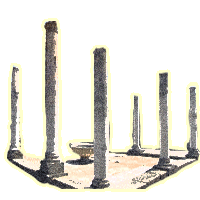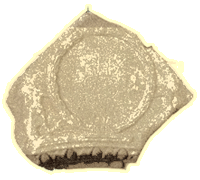 |
||

S I N G I D U N U M |
||
|
Singidunum was an ancient Roman city, first settled by the Scordisci in the 3rd century BC, and later garrisoned and fortified by the Romans who romanized the name. Known today as Beograd (Belgrade), the capital city of Serbia, birthplace to the Roman Emperor Jovian. It has arisen (according to legend and verified history) from its ashes 38 times. The Romans conquered Belgrade in the beginning of the I century A.D. and it was under their rule for 400 years. The soldiers of the Moesian legions made the first Roman garrison in Singidunum. Singidunum was most prosperous in 86 A.D., when the Fourth Legion of Flavius arrived. The first stone fortress was constructed. Fragments of that "castrum" (fort) show that it was square-shaped and covered the area of today's Upper Town. During its development, Singidunum outgrew its status of a "municipium" and become a colony of the Roman citizens. As an important Roman military camp, Singidunum gained municipal rights in the second century A.D. during the rule of emperor Hadrian. Its military importance became even higher in the third century, when the emperor Aurelian left Dacia and Upper Moesia gained new borders along the right bank of the Danube. In that period, Singidunum was the center of the Christian diocese. Some time later, it was the place of birth of the Roman emperor Flavius Jovianus. Between Singidunum and Taurunum, there was a bridge over the Sava, which connected the two towns and which was a part of one of the most important Roman roads. Thus, Singidunum became an important crossroad for the Roman provinces of Moesia, Dacia, Pannonia and Dalmatia. The military road - Via Militaris, which went from the west ... Continue |
... to the east, through Sirmium (Sremska Mitrovica), Singidunum and Viminacium (Kostolac), to Byzantium, was protected by forts. These forts also existed in the area of today's Belgrade. After the division of the Roman Empire into the Western Roman Empire and Eastern Roman Empire in 395, Singidunum became a border town of the Byzantine Empire. This new position of the town determined its later fate, for it became not only a linking point of various cultural influences, but, before all, a communication and strategic key of the Byzantine Empire. The disintegration of the Roman Empire was followed by invasion of barbarian peoples: Eastern Goths, Gepidaes, Sarmatians, Avars, Slavs and others. Because of its advanced position at the border - limes, Belgrade suffered frequent attacks and destructions. The attacks coming from the north, across Pannonia, the Danube and Sava, were so hard that even Singidunum, an important military stronghold, could not stand. The Huns captured it and completely destroyed it in 441. Singidunum lost its Roman inhabitants then. After the fall of the Huns, the town became a part of the Byzantine Empire once again in 454, but it was soon conquered by the Sarmatians, and later the Eastern Goths. However, already in 488, it became a Byzantine town again.
 TOP
TOP
|
|
  
|
||











